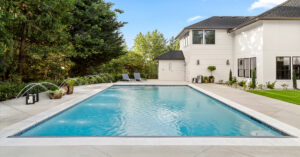
For many years, real grass has been the go-to option for homeowners who want to create a lush, green lawn. However, artificial grass has been making its way into the market as a viable alternative. Artificial grass, also known as synthetic turf, offers a low maintenance solution to traditional lawns. But is it the best option for your home? This blog post will discuss the pros and cons of artificial grass over real grass.
Pros
Low Maintenance
One of the most significant benefits of artificial grass is that it requires little to no maintenance. Unlike real grass, there is no need to mow, water, or fertilize it regularly. This convenience makes artificial grass the perfect solution for busy homeowners or those who want to reduce their carbon footprint.
Aesthetic Appeal
Artificial grass looks good all year round, providing an evergreen lawn that is perfect for climates that have limited rainfall or dry spells. It comes in various shades of green, making it easy to select one that matches your outdoor space.
Longevity
Artificial grass can last up to 25 years (sometimes more), depending on the quality of the product. This longevity makes it an excellent investment for homeowners who are looking for a long-term solution.
Safe for Children and Pets
Unlike real grass, synthetic turf does not require the use of herbicides, pesticides, or chemical fertilizers. This feature makes it a safer option for families with children or pets who love to play outside.
Cons
Cost
Artificial grass generally costs more upfront compared to real grass. The significant investment required for installation has been known to put off some homeowners.
Heat-Absorption
Artificial grass absorbs more heat than real grass, which can be discomforting for homeowners who reside in areas with high temperatures. Additionally, it can release toxic gases under high temperatures, which can be harmful to the environment and human life.
Not Eco-Friendly
The production of synthetic turf involves non-renewable materials like petroleum, making it environmentally unfriendly and contributing to climate change.
Not Natural Underfoot
Artificial grass does not give a natural feel underfoot as real grass does. Additionally, if not installed correctly, it can become lumpy and uncomfortable for walking or playing on the lawn.
Ultimately, the choice between artificial and real grass depends on personal preference and budget. Artificial grass is low maintenance, long-lasting, and child and pet-friendly, but it’s also more expensive and not very eco-friendly. Real grass requires more maintenance, but it’s natural, eco-friendly, and affordable. Whichever option you choose, it’s essential to consider the long-term costs, environmental impact, and aesthetic appeal of your lawn. Hopefully, this article has given you the pros and cons to help you make an informed decision.


